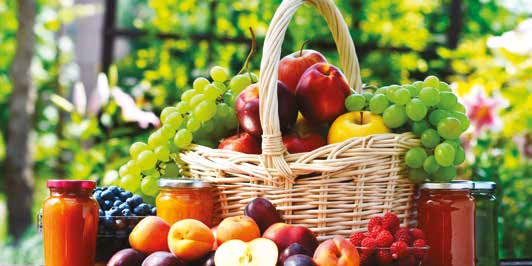The calorie content of the juices produced with both techniques is be the same, and the nutrient density of the juice is also be unaffected. However, if additional ingredients are added, e.g. sugar, the nutritional profile of the juice will naturally differ.
 Juicer versus blending
Juicer versus blending
This is quite a topical debate concerning juicers and blending – which method offers the greatest health benefits. The main difference between the two methods is essentially what is left out of the process. Juicing extracts the water and nutrients from the produce, discarding the fibrous component, whereas with the blending technique nothing is left out: the entire fruit is used, including the fibre components of fruit and vegetables, albeit broken down.
Juicing
When you juice your fruits and vegetables, the nutrient content is more concentrated. This is because the majority of vitamins and minerals are typically found in the juice, rather than in the pulp and fibrous material. Proponents of juicing will claim that nutrients will be more readily available, as your digestive system is not expending energy digesting the fibre. However, there is no hard science to confirm this assertion. On the contrary, when the fibre is removed, it will result in a rapid sugar spike as the juice is quickly absorbed into the blood stream.
Blending
On the contrary, the retention of fibre in the blending process helps to create a slow, even release of nutrients into the bloodstream. This exerts a better control on blood sugar levels. Fibre is important for optimal digestive health and helps you to feel fuller for longer, keeping hunger pangs at bay. Furthermore, the research shows that blended juices may deliver an increased level of antioxidants as they are normally contained in the fibrous membranes.
Take-home messages
A small 150 ml glass of fruit juice once a day as part of a healthy balanced diet and an active lifestyle is fine, as it contains essential vitamins and nutrients and will contribute to meeting your five-a-day fruit and vegetable goal. However, consuming above this amount of fruits means that you will be taking in a greater quantity of calories, which will all add to your daily calorie allowance. So be careful if you are trying to watch your weight, are diabetic or if want to take care of your teeth.
Read the nutritional label – it is extremely important to read the nutritional label, choosing products that contain 100% fruit juice with no added sugars, as this will only increase the level of calories in the product.
Juicing versus blending: Fibre delivers a plethora of health effects, and its relationship with health should not be underestimated. If you are struggling to decide between a juicer and blender, blending is probably the more natural technique as it retains the core composition of the fruit or vegetables.






